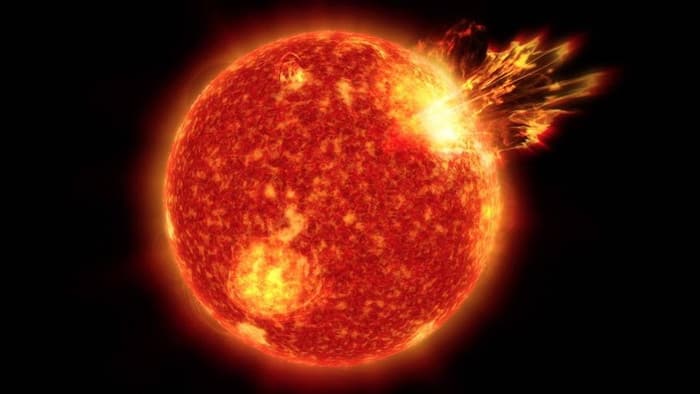Summary: Scientists have used advanced computer simulations to predict the existence of swirling vortices at the Sun’s poles, similar to those found on Earth and other planets. The research suggests these solar vortices form distinctive patterns that change with the Sun’s magnetic cycle, potentially offering new insights into solar behavior.
Journal: Proceedings of the National Academy of Sciences, November 11, 2024, DOI: 10.1073/pnas.2403816121 | Reading time: 4 minutes
A Solar Mystery Unveiled
While we’ve observed polar vortices on Earth, Jupiter, Saturn, and other planets in our solar system, the Sun’s poles have remained a mystery. “No one can say for certain what is happening at the solar poles,” explains NSF NCAR senior scientist Mausumi Dikpati, who led the new study.
Unlike planets, where we can directly observe polar regions, humanity has never sent a mission capable of viewing the Sun’s poles. This limitation has left scientists relying on computer models to understand what might be happening in these crucial areas.
A Dance of Magnetic Forces
The research reveals a unique pattern of vortex formation. These swirling structures first appear at about 55 degrees latitude – equivalent to Earth’s Arctic Circle. They then move toward the poles in a tightening ring, gradually shedding vortices until only two remain at the poles themselves.
This process is tied to the Sun’s magnetic cycle. The vortices eventually disappear completely during solar maximum, when the Sun’s magnetic field reverses polarity at the poles. The number and arrangement of vortices varies depending on the strength of the solar cycle.
Planning Future Solar Missions
The findings have important implications for future solar observation missions. “You could launch a solar mission, and it could arrive to observe the poles at completely the wrong time,” notes Scott McIntosh, a co-author of the paper.
The research suggests that polar vortices should be visible during most of the solar cycle, except at solar maximum. This timing could be crucial for planning missions like the Solar Orbiter, a joint NASA-European Space Agency project that will provide our first glimpse of the solar poles.
Glossary
- Solar maximum: Peak of solar activity when magnetic fields reverse
- Polar vortex: A spinning formation in fluid around a rotating body
- Solar cycle: Regular pattern of changes in the Sun’s magnetic activity
- Plasma: The hot, magnetized gas that makes up the Sun’s outer layers
Quiz
- At what latitude do the solar polar vortices first form?
Answer: 55 degrees latitude - When do the polar vortices disappear?
Answer: At solar maximum - Why haven’t we directly observed these vortices?
Answer: No mission has been able to observe the Sun’s poles - What makes the Sun’s vortices different from planetary ones?
Answer: They are influenced by magnetic fields
Enjoy this story? Get our newsletter! https://scienceblog.substack.com/
If our reporting has informed or inspired you, please consider making a donation. Every contribution, no matter the size, empowers us to continue delivering accurate, engaging, and trustworthy science and medical news. Independent journalism requires time, effort, and resources—your support ensures we can keep uncovering the stories that matter most to you.
Join us in making knowledge accessible and impactful. Thank you for standing with us!

